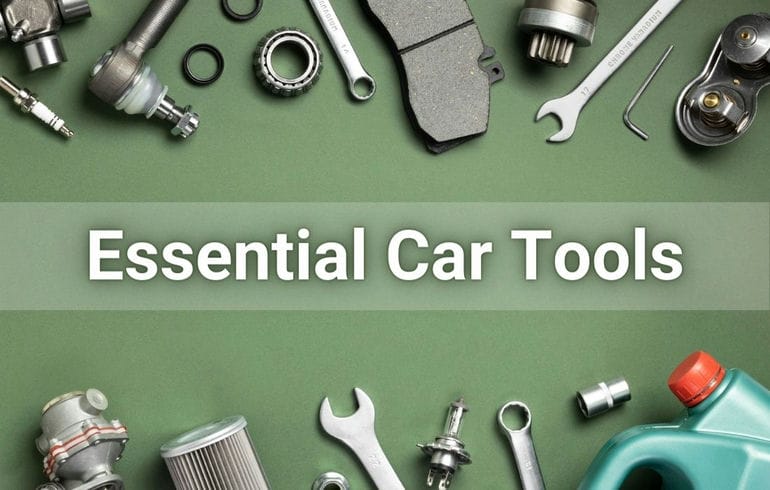When it comes to owning a car, having a set of essential car tools is crucial for both maintenance and emergency situations. Some of the most important tools to have to consist of a jack and jack stand for lifting the car off the ground, a lug wrench (wheel spanner) for removing and tightening lug nuts, a set of screwdrivers for various repairs, pliers for gripping and cutting wires, a socket set for removing bolts, and a wrench set for tightening nuts.
Additionally, having a tire pressure gauge, jumper cables, and a flashlight can come in handy during unexpected situations on the road. With these car essential tools on hand, car owners can perform basic maintenance and make minor repairs themselves, saving time and money. Below I will be sharing with you some major essential car tools needed for safety.
Essential Car Tools and How To Use Them
Essential car tools are a must-have for any driver, providing peace of mind and the ability to handle unexpected situations on the road
1. Jack

A car jack is an important essential car tool for changing a tyre or performing other maintenance tasks on your vehicle. When choosing a jack for your car, make sure to select one that is rated to support the weight of your vehicle. Most cars come with a scissor jack that is designed to fit in a specific location under the car, typically near one of the wheels. It’s important to consult your car’s owner’s manual to locate the designated jack points, which are the safest and most stable areas to lift the vehicle.
Before using a jack, make sure to park your car on a flat surface and engage the parking brake to prevent it from rolling. Also, place a chock or wedge behind the opposite wheel to prevent the car from moving while it’s lifted.
How To Use a Jack
- Position the jack under the designated jack point and turn the handle to extend the jack until it makes contact with the car’s frame.
- Make sure the jack is positioned squarely under the jack point and adjust its position if necessary.
- Turn the handle clockwise to raise the car until the tire is off the ground.
- Replace the tire or perform the necessary maintenance.
- Turn the handle counterclockwise to lower the car back down to the ground.
Always use caution when working with a jack, and never crawl under a car that is only supported by a jack. It’s recommended to use jack stands to provide additional support and stability while working on your vehicle.
2. Spare Tyre
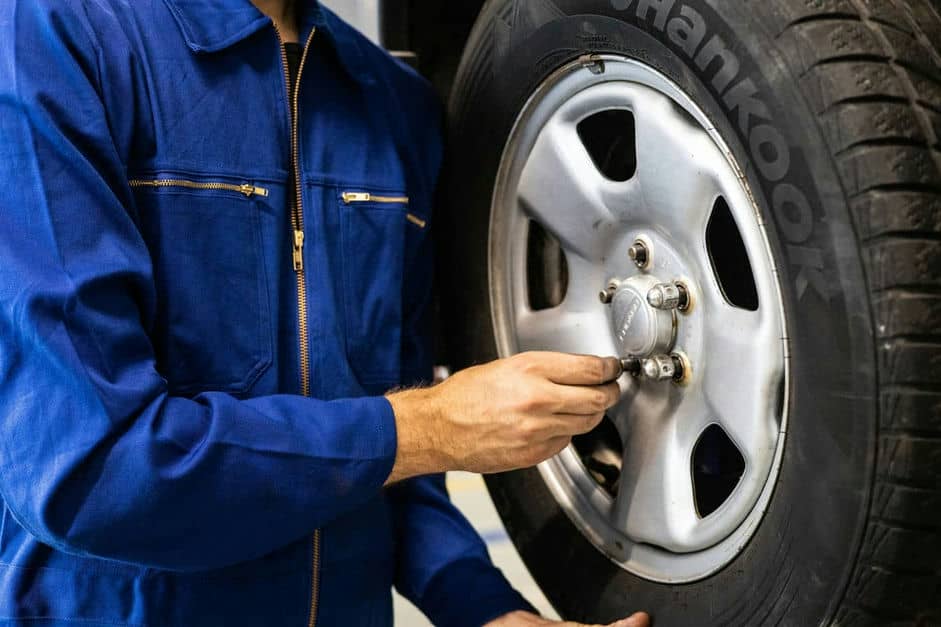
It’s essential to keep a spare tyre in your automobile. The spare tyre can replace the damaged tyre if you have a flat while driving. Always keep the spare tyre in good condition with the proper air pressure and tread depth. It’s critical to check that the spare tyre and jack are both readily available in case of an emergency before heading out on the road. Knowing how to replace a tyre yourself may save you time and money, and allow you to get back on the road more quickly.
How To Change Your Tyre
- Choose a secure area to replace the tire, then switch on your warning lights.
- Use a lug wrench to remove the lug nuts from the flat tire.
- To raise the automobile and get the flat tire off, use a car jack.
- After replacing the spare tire, manually tighten the lug nuts.
- Lower the vehicle back to the ground and fully tighten the lug nuts.
Remember to get the flat tire repaired or replaced as soon as possible.
3. Fire Extinguisher
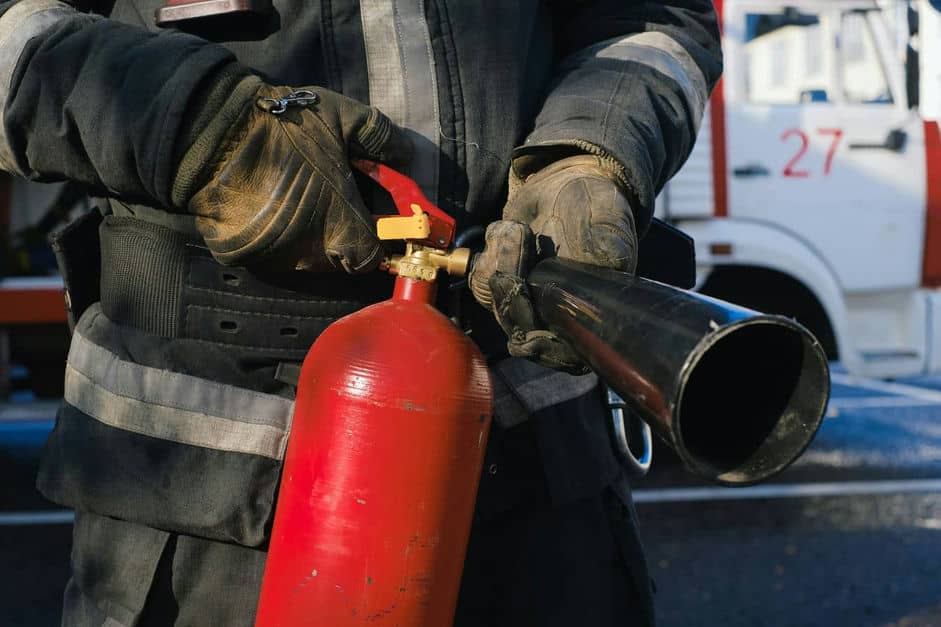
Having a fire extinguisher in a car is a good safety practice, as it can help you quickly put out a fire and prevent it from spreading. Car fires can happen due to a variety of reasons, such as engine overheating, fuel leaks, electrical malfunctions, or accidents.
When selecting a fire extinguisher for your car, ensure that it is rated for use on Class B (flammable liquids) and Class C (electrical) fires. Extinguishers labelled as “BC” or “ABC” are typically appropriate for these types of fires. It is important to avoid using extinguishers labelled as “A” only, which are designed to combat fires involving ordinary combustibles like wood or paper. Using a fire extinguisher can be an effective way to quickly and safely extinguish a small fire before it gets out of control
How To Use a Fire Extinguisher
- Pull the pin: The first step is to pull the pin located on the top of the extinguisher. This will break the seal and allow you to use the extinguisher.
- Aim at the base of the fire: Aim the nozzle or hose at the base of the fire, not at the flames themselves. This will help extinguish the source of the fire.
- Squeeze the handle: Squeeze the handle to release the extinguishing agent. Be sure to use a sweeping motion from side to side, while continuing to aim at the base of the fire.
- Keep a safe distance: Always keep a safe distance from the fire and move slowly towards the fire as you extinguish it. If the fire is too large or out of control, evacuate the area immediately and call the fire department.
- Use the right type of extinguisher: It’s important to use the right kind of extinguisher for the type of fire you are trying to put out.
Remember, if the fire is too large or spreading rapidly, it’s best to evacuate the area and call for professional help.
4. Wheel Spanner
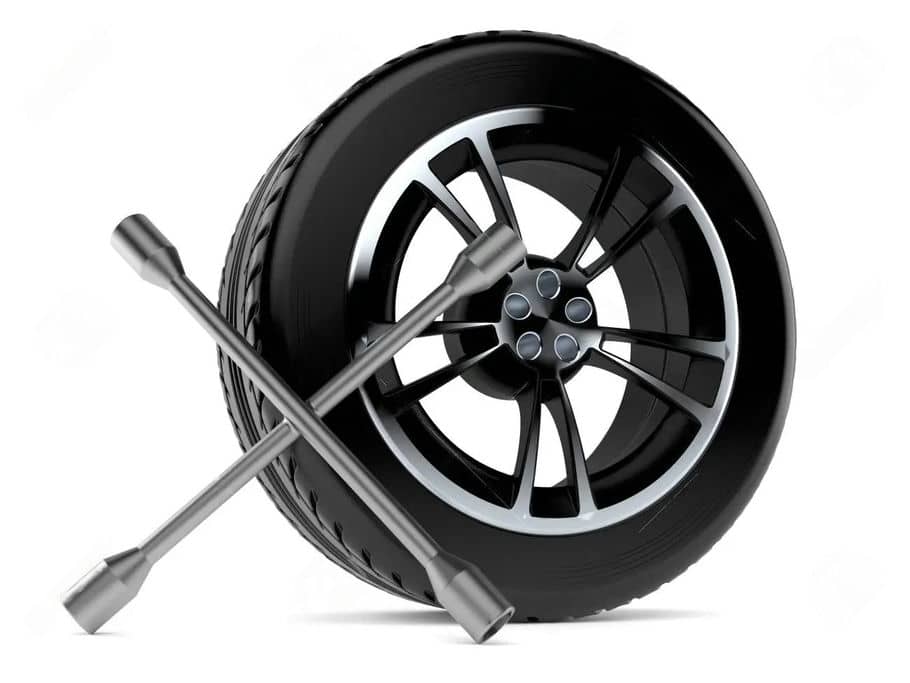
A wheel spanner, also known as a lug wrench, is an essential car tool that people use to loosen and tighten lug nuts on car wheels. Lug nuts are the fasteners responsible for holding the wheel to the car’s hub, and it is essential to tighten them securely to ensure the vehicle’s safe and reliable operation.
The most common type of wheel spanner is a cross-shaped tool with different sizes of sockets on each end to fit different size lug nuts. Some cars may also use a socket wrench or torque wrench to tighten lug nuts. The wheel spanner that comes with most cars is typically designed to fit the lug nuts on the wheels.
How To Use a Wheel Spanner
- Position the wheel spanner: Locate the lug nuts on the wheel that needs to be removed. Position the wheel spanner on the first lug nut, making sure the socket fits snugly over the nut.
- Turn the wheel spanner: Turn the wheel spanner counterclockwise to loosen the lug nut. Use your body weight to apply pressure to the spanner, as some lug nuts can be very tight. If the nut is particularly stubborn, you can try hitting the end of the spanner with a mallet to break it free.
- Remove the lug nut: Once the lug nut is loose, remove it from the wheel by hand. Place it in a safe place where it won’t get lost.
- Repeat the process: Continue using the wheel spanner to loosen and remove each lug nut on the wheel, one at a time, until they are all removed.
- Replace the wheel: Carefully lift the wheel off the car and replace it with a new one if needed.
- Tighten the lug nuts: Replace the wheel and hand-tighten each lug nut in a star pattern before lowering the car back down. Use the wheel spanner to tighten each lug nut as much as possible, again using the star pattern.
Always remember to use the correct size of wheel spanner for your car’s lug nuts and to check the manufacturer’s recommended torque settings for tightening the lug nuts. It’s also a good idea to periodically check the tightness of your lug nuts to ensure they are secure.
5. Jumper Cables
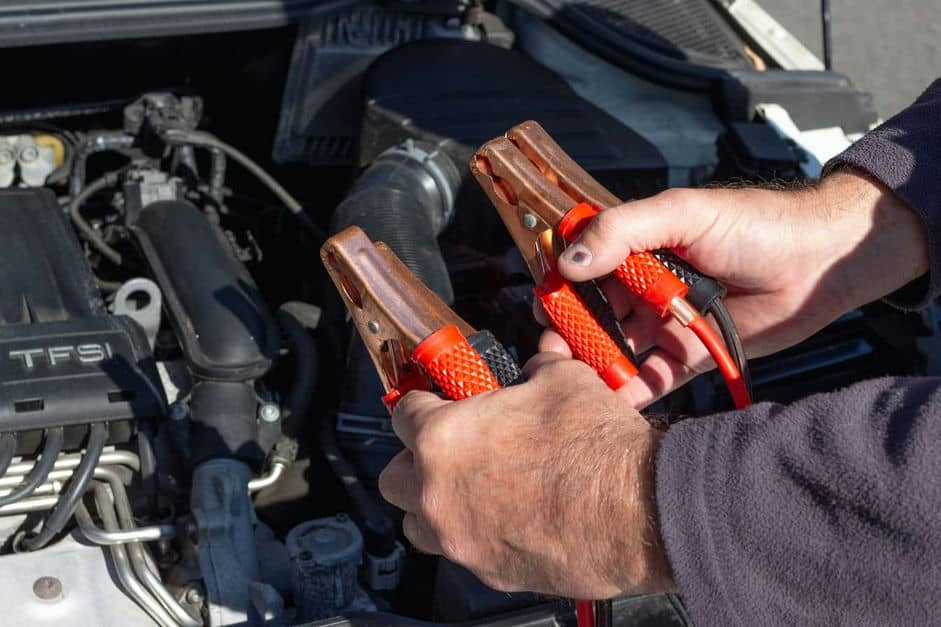
Jumper cables, also known as booster cables, are a type of electrical cable used to jump-start a vehicle with a dead battery. The cables consist of two insulated wires with alligator clips on each end. To start a car that has a dead battery, cables are used to connect it to a car with a charged battery.
How To Use Jumper Cables
- Park the car with the charged battery next to the car with the dead battery, making sure the two cars are not touching.
- Turn off both cars and put them in park or neutral, with the emergency brake on.
- Locate the battery on each car. The battery is typically located under the hood and is a rectangular box with two terminals on top.
- Identify the positive and negative terminals on both batteries. The positive terminal is usually marked with a “+” sign, and the negative terminal is usually marked with a “-” sign.
- Connect one end of the red jumper cable to the positive terminal on the dead battery.
- Connect the other end of the red jumper cable to the positive terminal on the charged battery.
- Connect one end of the black jumper cable to the negative terminal on the charged battery.
- Connect the other end of the black jumper cable to a metal surface on the car with the dead battery. This should be a clean, unpainted metal surface, away from the battery and the fuel system.
- Start the car with the charged battery and let it idle for a few minutes.
- Try to start the car with the dead battery. If it starts, let both cars run for a few minutes before disconnecting the cables.
- To disconnect the cables, start with the black cable, and then the red cable. Do not let the cable ends touch each other or any metal surface.
- To ensure the battery is fully charged, drive the car with the previously dead battery for at least 20 minutes once you have disconnected the cables.
6. Tow Rope
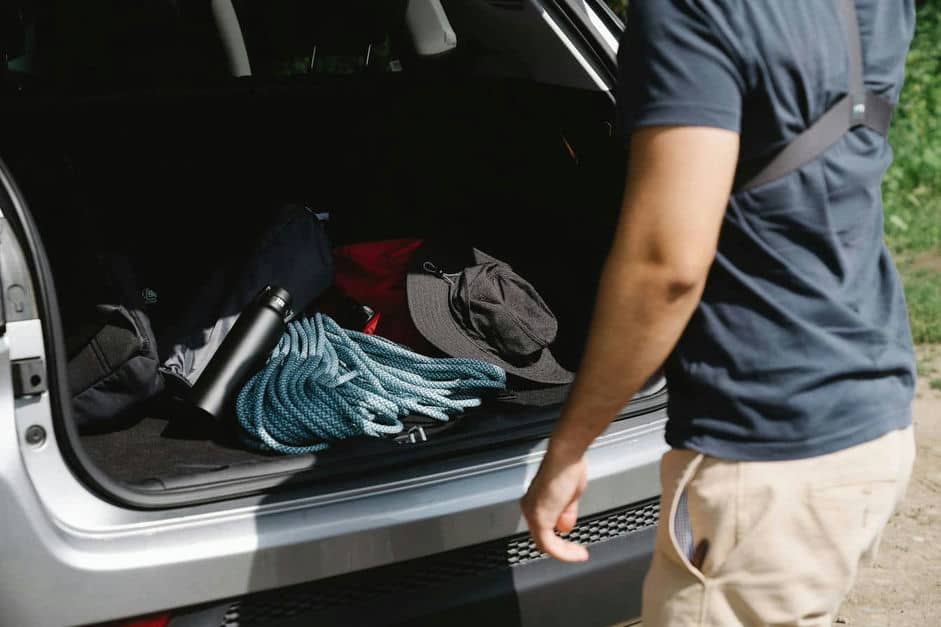
A tow rope is a long, strong rope that is used to pull or tow a vehicle or other object. People commonly use tow ropes to move a broken-down or stuck vehicle by attaching the rope to both the disabled and functioning vehicles. It is crucial to confirm the rope’s strength and secure attachment to both vehicles when using it.
How To Use Tow Rope
- Make sure both vehicles are turned off, and the emergency brakes are on.
- Find a sturdy tow rope that is appropriate for the weight of both vehicles. The rope should have a higher weight capacity than the weight of the heaviest vehicle.
- Attach one end of the tow rope to the towing vehicle. Use a secure attachment point, such as a tow hook, and make sure the attachment is tight and secure.
- Attach the other end of the tow rope to the vehicle being towed. Again, use a secure attachment point, such as a tow hook, and make sure the attachment is tight and secure.
- Signal to the driver of the towed vehicle to release the emergency brake and put the vehicle in neutral.
- Slowly start the engine of the towing vehicle and begin to drive forward. Gradually increase speed, but do not go over 20 mph.
- Keep a safe distance between the two vehicles, at least 15 feet, and avoid sudden stops or turns.
- If either vehicle starts to swerve or lose control, gently apply the brakes to both vehicles to slow down and stop.
- When you have reached your destination, signal to the driver of the towed vehicle to apply the brakes and put the vehicle in park.
- Disconnect the tow rope carefully and store it in a safe place.
Before attempting to tow a vehicle, it is important to check your vehicle owner’s manual for specific instructions on towing. Additionally, in some areas, it may be illegal to tow a vehicle without proper equipment or training.
7. Basic Toolkit
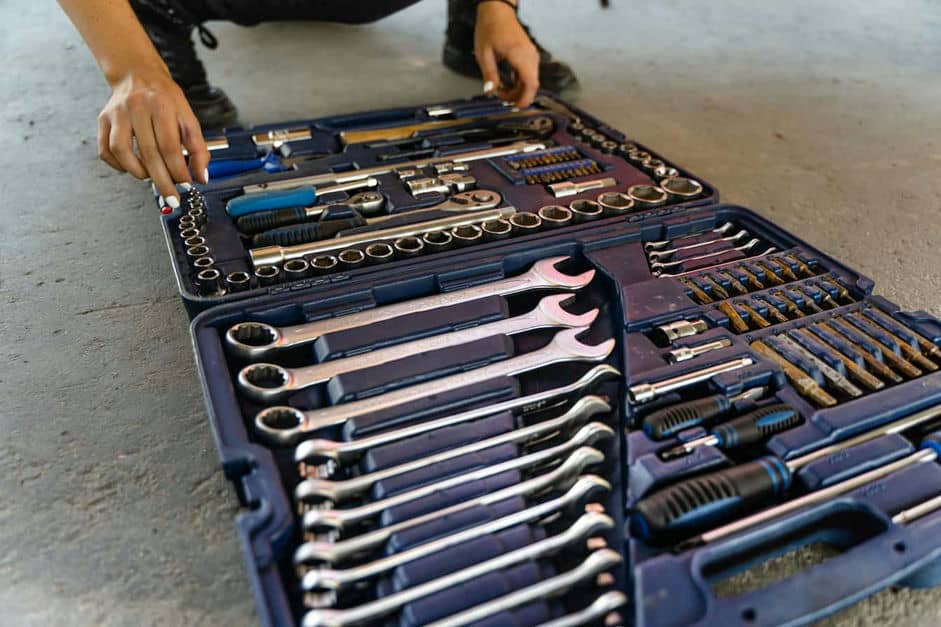
Every automobile owner should have a basic toolset. It comprises of a collection of wrenches, duct tape, screwdrivers, and pliers that may be used to make quick fixes and changes while driving. You can tighten loose bolts, swap fuses, or even patch a flat tire with a toolbox nearby. By keeping a toolbox in your car, you may avoid relying on expensive roadside help and be ready for any emergency. Just be sure to keep the tools in an accessible and comfortable spot in your car.
Conclusion
Drivers can enhance their driving experience by ensuring they have essential car tools readily available. These essential car tools can aid in handling minor issues and emergencies, resulting in a safer and more enjoyable drive.




